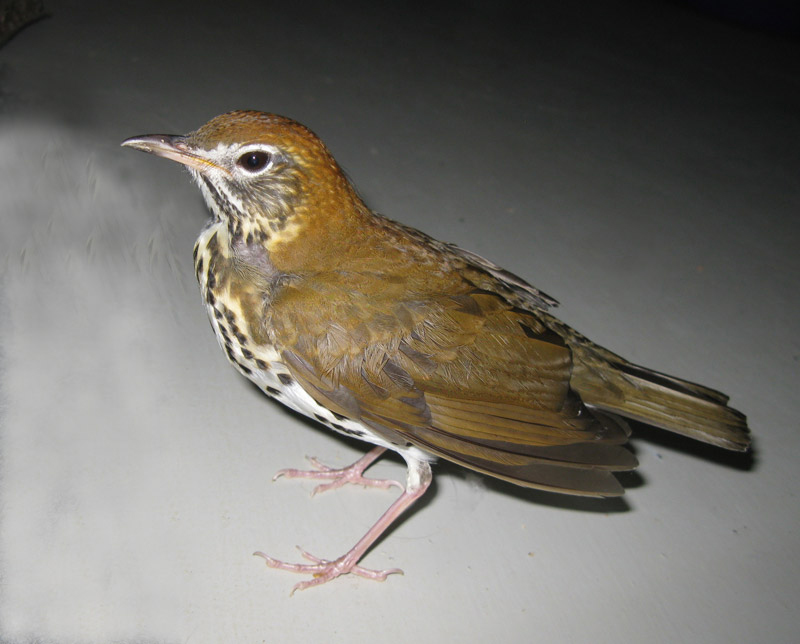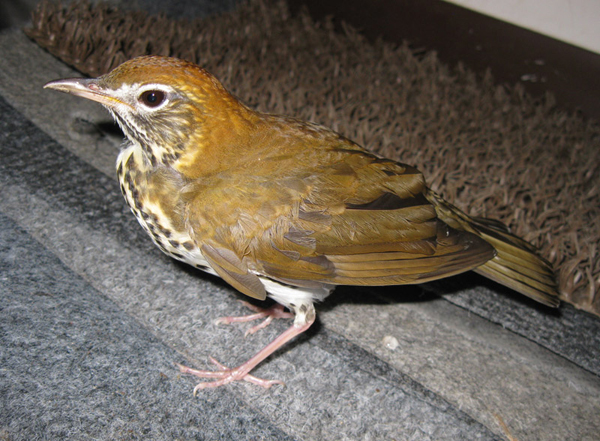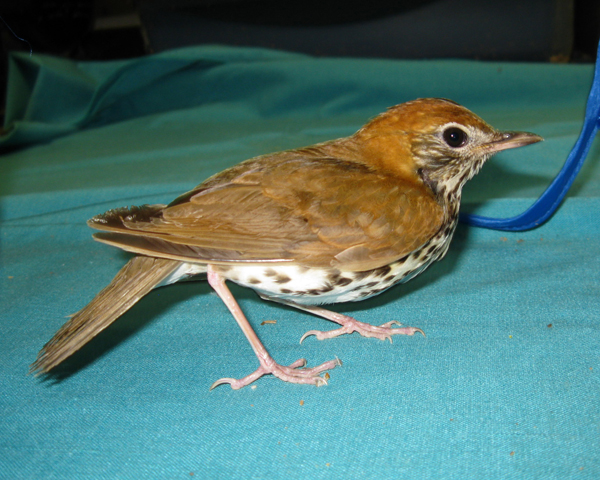
October 7, 2013

October 7, 2013

May 7, 2013
Mnemonic description of song:
chk-chk-chk…(dry-subtle)…ra-vi-o-li (flute-like)
ee-oh-lay (flute-like – last note trilly)
ra-vi-o-li (flute-like)
oo-duh-lay-oh or oodle-drrrr (last note trilly)
fweet-fweet-fweet… (rapid-fire)
What do we know about wood thrush song?
Repertoire
- 3-part song: 1st part is short, low in pitch and quiet, 2nd part is flute-like and loud, 3rd part is trill-like (Borror and Reese 1956b, Stein 1956)
- Ventriloquist properties
- 1-3 variations of 1st-part of song, 2-8 of central part and 6-12 of last part (Borror and Reese 1956b ,Whitney 1985)
- Create different songs from various combinations of the parts (Borror and Reese 1956b)
Neighbors
- Countersings, but avoids answering with identical songs (Kroodsma 2005)
Females
- Females may sing (Brackbill 1958)
How and when is song acquired?
- Learn central, flute-like part of song, 1st and 3rd part not learned (Lanyon 1979a)
- When young isolated from song, central part develops abnormally (Lanyon 1979a)
- When tutored with recorded central phrases, develop songs with those phrases (Whitney 1985, Whitney and Miller 1987)
What can we do to facilitate learning?
Expose to adult singing
Play recordings of song as playing them has been shown to be effective.
…………………………………………………………………….
Resources:
Borror, D. J. and C. R. Reese. (1956b). Vocal gymnastics in Wood Thrush songs. Ohio Journal of Science 56:177-182.
Brackbill, H. (1943). A nesting study of the Wood Thrush. Wilson Bulletin
55:73-87.
Brackbill, H. (1958). Nesting behavior of the Wood Thrush. Wilson Bulletin 70:70-89.’
Kroodsma, Donald.2005. The Singing Life of Birds: 237-254.
Lanyon, W. E. (1979a). Development of song in the Wood Thrush (Hylocichla mustelina), with notes on a technique for hand-rearing passerines from the egg. American Museum Novitates 2666:27.
Stein, R. C. (1956). A comparative study of “advertising song” in the Hylocichla thrushes. Auk 73:503-512.
Whitney, C. L. (1985). Serial order in Wood Thrush (Hylocichla mustelina) song. Animal Behaviour 33:1250-1265.
Whitney, C. L. and J. Miller. (1987). Song learning in the Wood Thrush. Canadian Journal of Zoology 65:1038-1042.